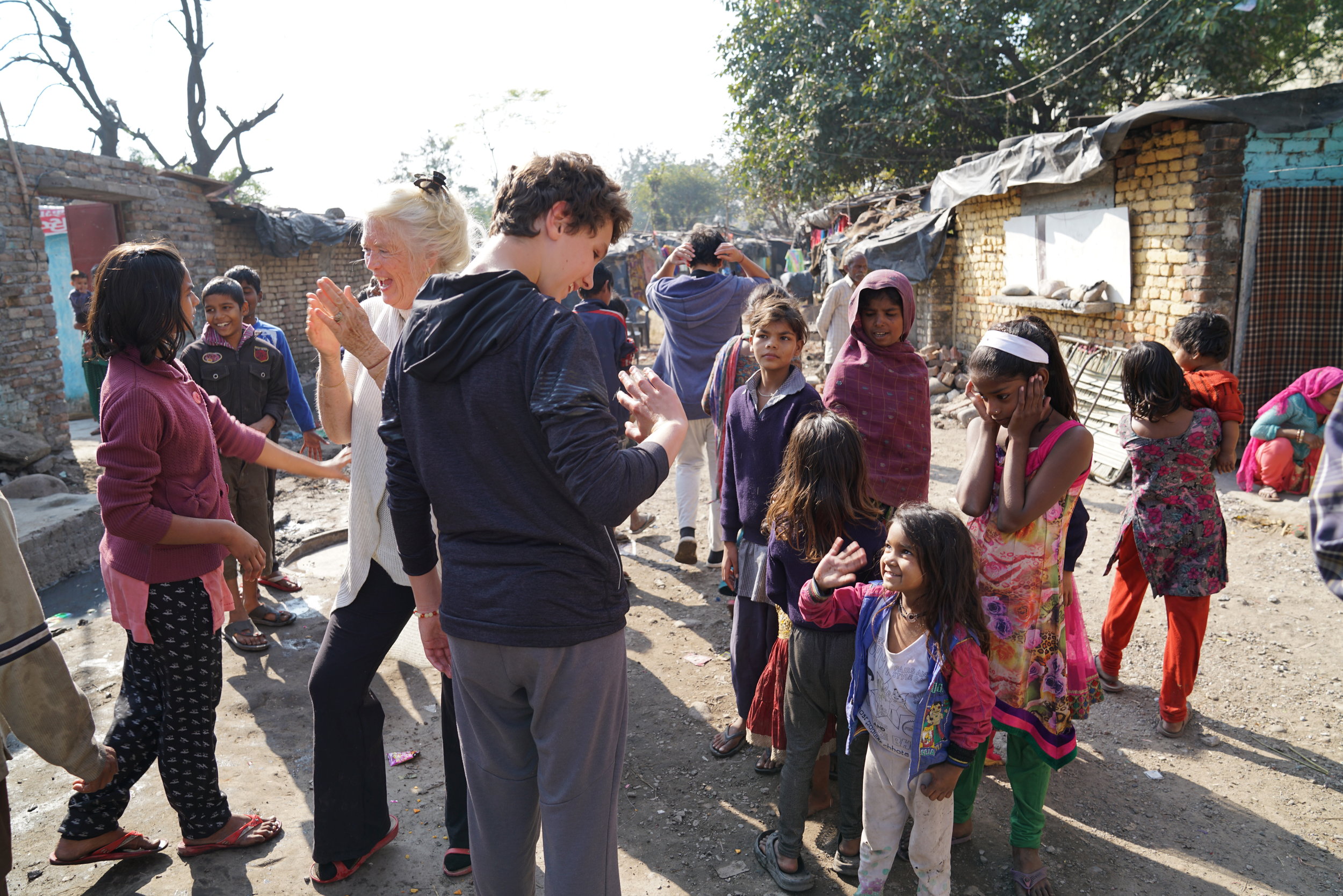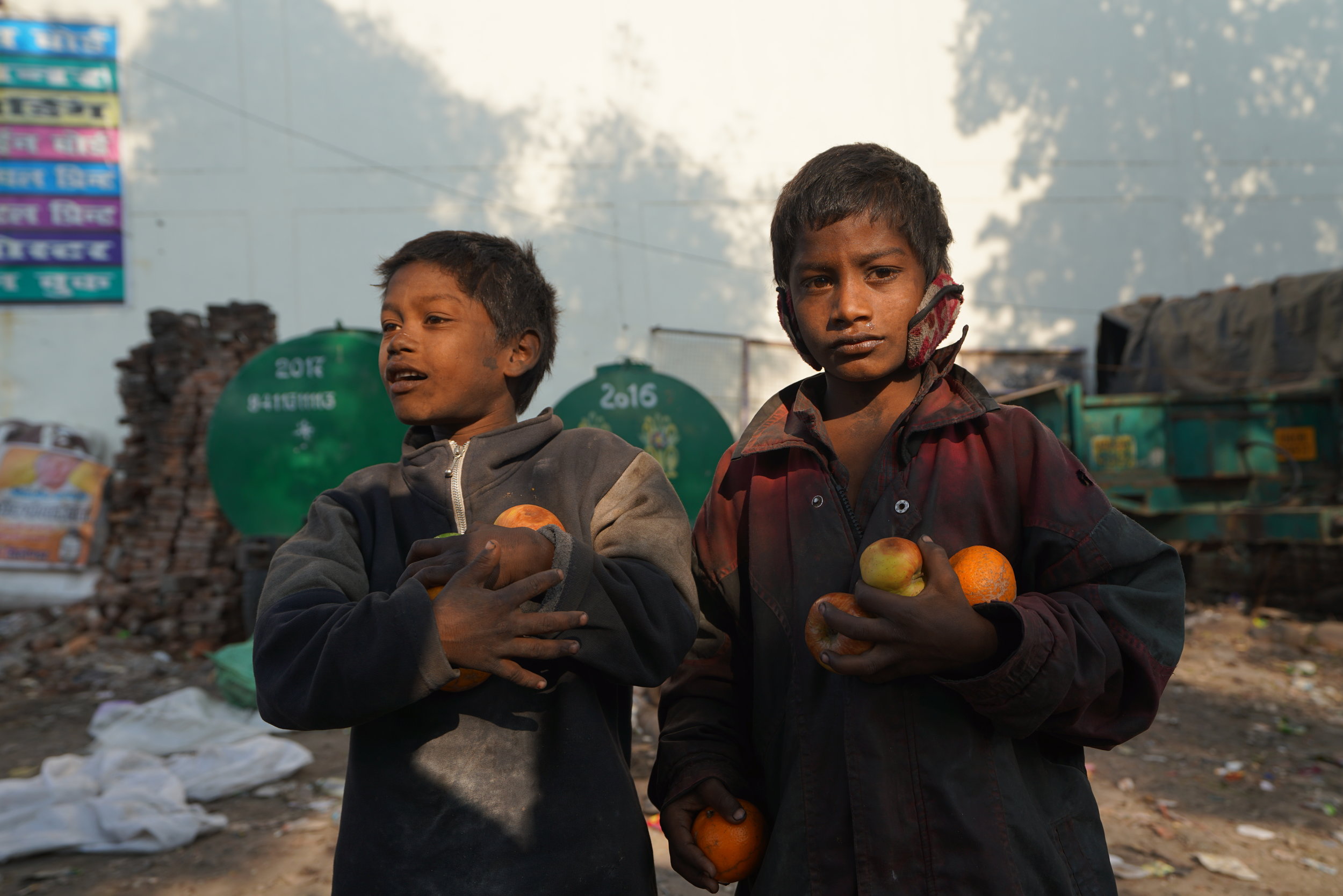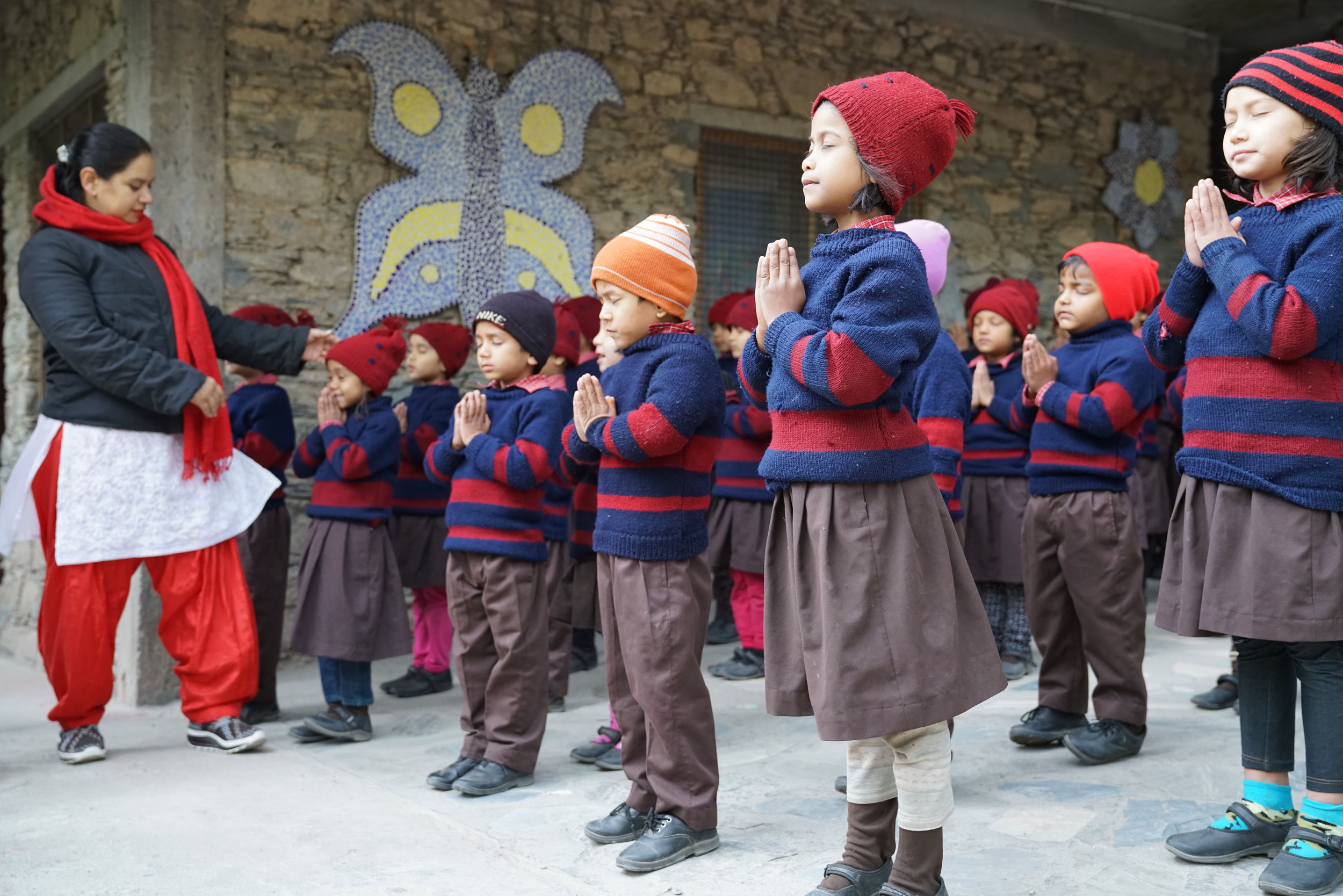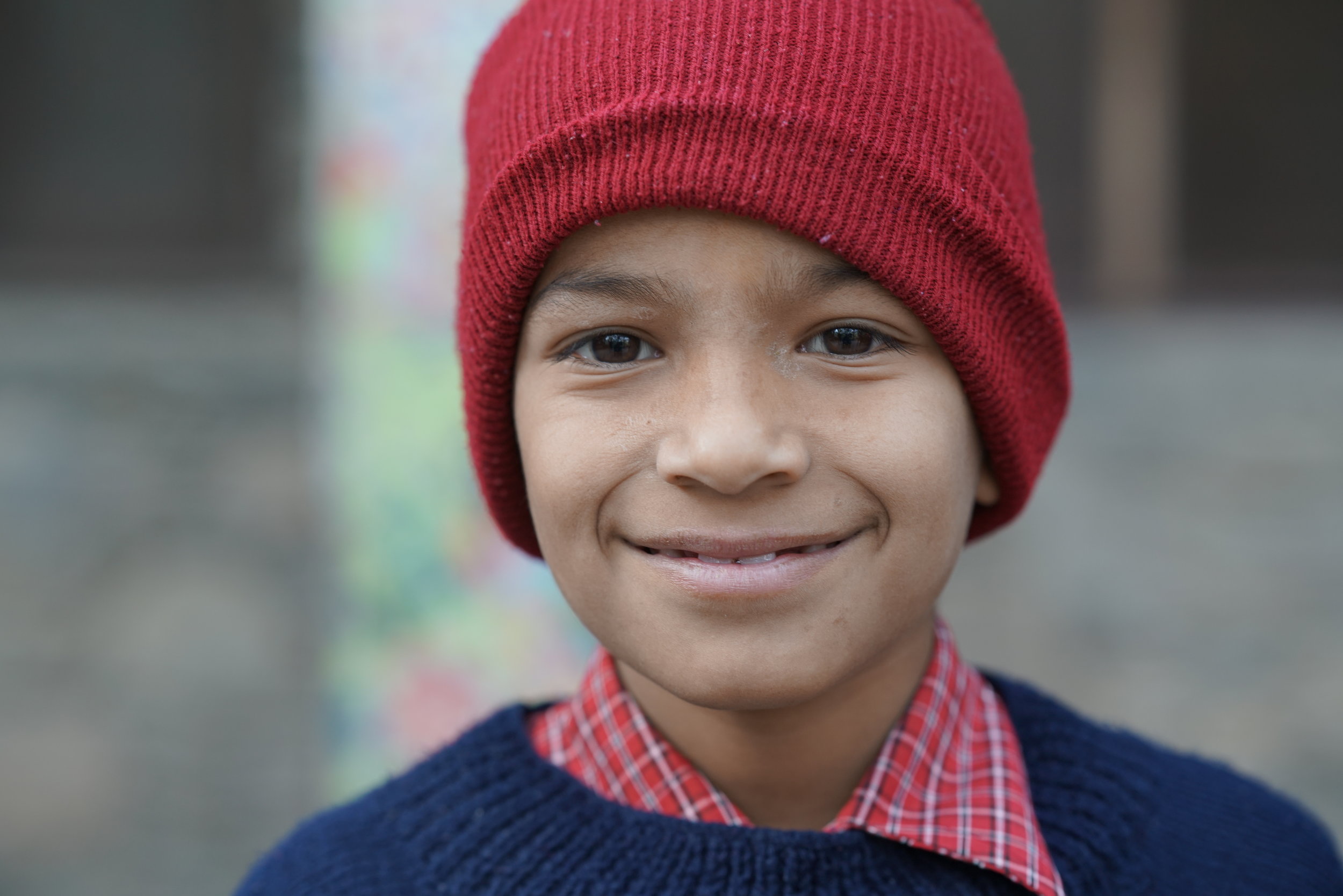A New Future by Lukas Kamrath
“Untouchable.” “Ragpicker.” Imagine either of these titles being placed upon you from the moment you begin your life. Imagine your home is in a dump, amongst other’s trash. Imagine having to sort through this garbage as well as human, pig and cow feces in order to make enough money to simply survive. Imagine not having access to clean water to drink or use for washing. Imagine never having enough food to leave you feeling full and well nourished. Imagine living under a pile of scraps gathered in order to barely make a shelter over your head. Imagine living with diseases and infections without any medication. Imagine your lungs filled with smoke from the constant burning trash surrounding your home. Now imagine over 17 million kids in India living this life.
It’s hard to believe that any human being could hear this and not want to help. But most, likely, feel overwhelmed by the severity and size of the problem and think they are not able to make a difference. However, during our time in India, we met a woman named Prabha … not your average person. After spending time visiting the country, instead of returning to her home in Los Angeles, California, 37 years ago, she stayed … she knew she needed to help these children. She created a school and home for these “untouchables.” These are the kids she finds in the worst conditions and in the most critical situations. Some are from the slums; others she saves from being used as human body shields, prostitutes, and organ donors (without consent); as well as those without parents to take care of them or who have abusive, alcoholic parents. She brings them into her life, providing a home, plentiful meals, one of the best educations in India and, most importantly, love from the community within. This school and home is called Ramana’s Garden.
When visiting this place for the first time, I was shocked. It didn’t feel like an orphanage or a place full of kids that had been through terrible suffering, trauma and neglect. These kids were laughing and playing and as soon as I brought out a soccer ball, I was surrounded by smiles and giggles and chatter. How could these sweet kids ever have been called “untouchables?” Watching them run and laugh with joy showed me what Ramana’s Garden was all about. The kids were confident, energetic, playful … you would never believe that they had all come from such suffering. After being cared for and loved, they were able to show their true wonderful selves. They were polite and kind and happy. With the organic meals they prepare, their school uniforms, loving friends and caretakers, they might be better off than many Americans.
We sat down with Prabha to see if there was anything we could do to help. She told us that if we wanted to, we could visit a “ragpicker slum” so we could help feed, clean, and talk to the kids who lived there. We were instructed not to give the children anything that could be sold, because the “slum lords” and other young men nearby, would beat them and steal their goods to sell. This had happened previously. We planned to bring fruits, juices, samosas, cookies, biscuits, soap and blankets. In order to ensure that the blankets would not be taken to be resold, the kids at Ramana’s Garden had cut the corners off of each brand-new blanket. At 11:30 the next morning, we loaded up our supplies on their small school bus and we were off to help.
It was a quick 15-minute drive until we arrived and when I stepped off the bus, my expectations were very low after being told about the horrible conditions. The first thing we did was buy over 200 apples, oranges and bananas from local street vendors. While they gathered the fruit, Prabha began to lead us into the heart of the slum. The trash was not detectable at first from the road but the smell was overwhelming. As we walked on we were shocked when she showed us the water supply for the 1,500 people who live there. It was a small murky puddle mixed with garbage and feces ... it was beyond imagination. A whole village was surviving on water filled with diseases and bacteria, which would definitely make me and everyone I know incredibly sick. All the kids gathered around us. The shy ones smiled from a short distance and the brave ones eagerly came up to me with an outstretched hand, a smile and a “Hello, what is your name?” Most looked like they had never had a shower and many looked famished. Everywhere I stepped there was trash that is dumped there each night. Flies swarmed around my head, buzzing in every direction. Huge pigs and cows lay eating the trash in the distance.
After walking further through the “slum” (their village), we were ready to begin to help. At this point, I had shaken most of the kid’s hands, communicated a bit in spite of our language barrier and realized how bright and kind the children were, even through all their hardships. At one point, we came across “slum lords” who yelled at us for being there. But after some intimidation from the size of our group, they scurried off … like the cowards they are. Over the years, Prabha has put in place two toilets and a water pump with clean, sanitary water for the kids to use. But the villagers were forbidden from using them by the slum lords. Because they did not want to confront us, my dad and I were able to pump the water for the children, after Prabha gave them soap to clean. Watching the kids bathe and play in the water brought joy to my heart. They drank, splashed each other and washed their hands, preparing for the main event.
After everyone was clean, we made our way to the front of the village. All of the children gathered in a cluttered line and we began to feed them lots of food. Each child received a samosa, orange, apple, banana, juice and a cookie. Looking at the excited and joyful faces of the kids made me deeply happy. We had a line system where the food would be passed down until it got to me. I had the lucky job of actually placing the food in each child’s hands … actually in their shirts as their small hands could not carry the load. Soon, the whole village had gathered, including all of the adults. However, the kids came first. By being able to meet every kid in the village and seeing how grateful and happy they were made me even more excited to give. How could such sweet children be living such an unfortunate life? How could a society or system that allows humans to live like this still exist today? After finally handing out the last of the food, I hopped back on to the bus, shell shocked from what I had just witnessed.
Back at Ramana’s Garden, I looked at the confident, smart, joyful kids and realized that many of them came from situations like those in the slums. But they were lucky enough to get the opportunity to have a different future. As nice as it felt to help give a meal to the kids living in the slums, it isn’t going to change their bleak future. They need an education, they need nutritious food, they need someone to show them their worth. They, too, need Ramana’s Gardens. At this time, the school has no more room for additional children. However, there is space to build another building with classrooms and showers. They already have a bus that could take the kids to and from the slum. Even if the kids have to go back to the dump at night, during the day they will be able to learn, play and nourish themselves with a meal and clean water. And, most of all, they will begin to learn that people care about and value them. My family and I plan to work to raise money to help Ramana’s Garden grow and accomplish this meaningful mission. Please reach out if you’d like to help … I can promise it’s worth it.





















